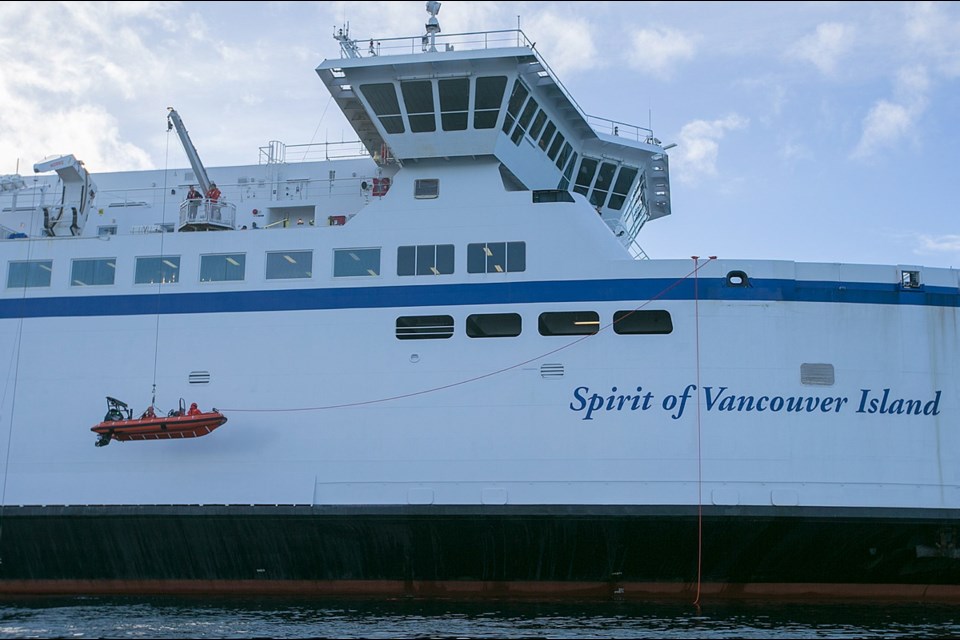In an instant, smoke fills the lower car deck on the port side of the Spirit of Vancouver Island.
A mock collision between the ferry and the Salish Eagle at Swartz Bay played out last week in a training drill for more than 40 crew members.
The captain’s voice sounded throughout the ship: “Attention crew. Attention crew. Brace for impact. Brace for impact.”
One team heads to the car deck where a smoke machine is running. Minutes later, salt water shoots out of the overhead sprinkler system in a deluge to prevent fires from migrating from one vehicle to another.
Each vehicle is a potential explosive hazard in a fire, says Mark Collins, B.C. Ferry Services Inc.’s president.
Amid dense smoke, the first thing that comes to mind is that Ferries’ new rule banning passengers from remaining in cars on closed decks makes sense.
If you’re in a car surrounded by smoke, “no one might know you are there and that’s why you could asphyxiate,” Collins said.
And if you leave your vehicle, the lack of visibility would make it easy to become disoriented and possibly become trapped in a corner.
The mock collision set off a cascade of events — two rescue boats went into the water, a mother and child were separated, passengers needing assistance were moved from assembly areas to the evacuation station, a special stair climber was used to help a passenger who was not mobile.
In the engine room, sensors showed areas of trouble in the ship as the situation worsened.
Even knowing this was a drill, it was chilling to stand on the deck of a familiar ship and hear the announcement: “Abandon ship. Abandon ship. Abandon ship.”
It took just seconds for a hydraulic lift to lower rescue boats crewed by ferry workers, in red survival suits and helmets, into the water. In a real emergency, the boats would tow rafts carrying passengers away from the ship.
The Spirit of Vancouver Island’s upcoming major refit will see angled escape chutes installed, to replace its current vertical chutes, said Camrin Hillis, who manages Swartz Bay terminal.
Training continues once the exercise is over, when crew members gather again for an intense de-briefing.
All crew members are trained in a range of duties — along with the tasks that the public sees, such as delivering you a hamburger and directing traffic while loading.
The scope of emergency training is broad — covering flooding, entering confined spaces, evacuating casualties, propulsion emergency shutdown and much more.
Ferries spends more than $14 million per year on training, carried out in hundreds of drills and more than 27,000 days of training for employees, said Deborah Marshall, Ferries spokeswoman.
Collins recalls a fire when he was working in an engine room on a bulk carrier many years ago.
There was a loud bang and in “nanoseconds” the fire took off and he was disoriented. “Only one thing gets you through — it’s your training.”
Government and marine-industry rules govern ferry safety standards. If a ship does not have the required number of staff trained in specific areas, it doesn’t sail, Collins said.
Safety is a corporate value, and meetings begin with individuals sharing stories about safety, he said.
On average, Ferries carries out about 24 marine rescues, when a rescue boat is launched, annually.
It handles 125 marine emergencies, which would include medical emergencies on board, or being asked to help by the Canadian Coast Guard.
The Canadian Safe Boating Council presented B.C. Ferries with an award in January for a 2017 case when the Spirit of Vancouver Island sent a skilled rescue crew out, ultimately saving six lives.



